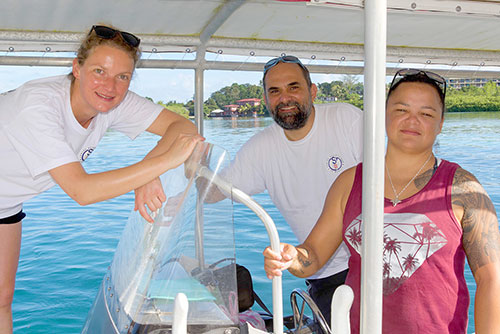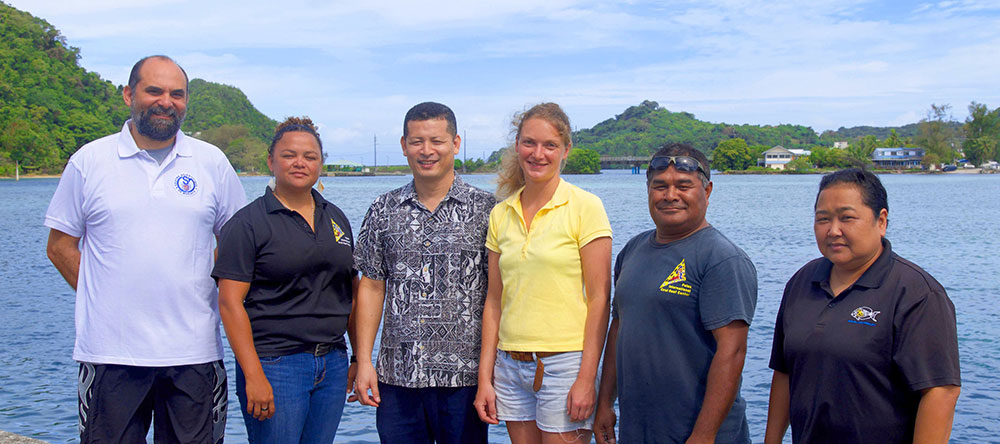- Research
New PICRC Study Finds Microplastics throughout Palau’s Reefs and Beaches
A new study from the Palau International Coral Reef Center and the Centre Scientifique de Monaco (Scientific Center of Monaco) has uncovered a sobering result: plastic pollution is everywhere on Palau’s islands, reefs and beaches.
The study was coauthored by the Center’s Researcher Ikelau Otto and Chief Executive Officer Dr. Yimnang Golbuu with Drs. Eric Beraud, Vanessa Bednarz and Christine Ferrier-Pages from the Centre Scientifique de Monaco and recently appeared in the scientific journal, PlosOne.
The researchers sampled seawater, sediments and beach sand throughout Palau’s islands for tiny plastic particles. Significant amounts of plastic were detected in every sample.
“Palau was chosen as a study site for this experiment because our reefs are considered pristine. But even here we found high concentrations of microplastics.” said Otto. “There is likely nowhere left in the world that has not been contaminated by plastic pollution to some degree.”
The researchers targeted two variants of plastic particles in their samples: microplastics, particles smaller than five millimeters, and nanoplastics, particles smaller than one nanometer. Both particles form as fragments of larger plastic debris like bottles and fishing nets.
Marine life absorbs these plastic particles into their bodies where the plastic can harm their metabolisms, respiration and immune systems. Coral reefs may be particularly vulnerable.
“Research has shown that corals absorb plastic particles the same way they absorb their food. Once the plastic is inside the corals, it can impair their growth and lead to coral bleaching” said Dr. Golbuu.
The study showed the lowest concentration of microplastics in northeast areas like Melekeok, Ngiwal and Ngaraard. Ocean currents flow away from the coast in these areas and may carry plastic pollution out to sea.
Southeastern islands like Mecherchar were found to have comparatively higher concentrations of microplastic on their beaches. This may be because plastic collects on the outer reef at low tide and washes into the beach as the tide rises.
Read the full study at https://journals.plos.org/plosone/article?id=10.1371/journal.pone.0270237 or contact PICRC at 488-6950.



